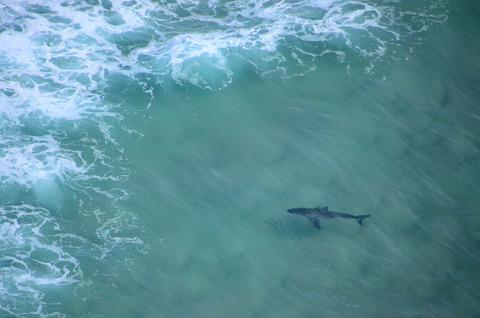当前位置:
X-MOL 学术
›
Ecol. Evol.
›
论文详情
Our official English website, www.x-mol.net, welcomes your feedback! (Note: you will need to create a separate account there.)
Effective number of white shark (Carcharodon carcharias, Linnaeus) breeders is stable over four successive years in the population adjacent to eastern Australia and New Zealand
Ecology and Evolution ( IF 2.6 ) Pub Date : 2020-12-09 , DOI: 10.1002/ece3.7007 Danielle Davenport 1 , Paul Butcher 2 , Sara Andreotti 3 , Conrad Matthee 3 , Andrew Jones 1 , Jennifer Ovenden 1
Ecology and Evolution ( IF 2.6 ) Pub Date : 2020-12-09 , DOI: 10.1002/ece3.7007 Danielle Davenport 1 , Paul Butcher 2 , Sara Andreotti 3 , Conrad Matthee 3 , Andrew Jones 1 , Jennifer Ovenden 1
Affiliation

|
Population size is a central parameter for conservation; however, monitoring abundance is often problematic for threatened marine species. Despite substantial investment in research, many marine species remain data‐poor presenting barriers to the evaluation of conservation management outcomes and the modeling of future solutions. Such is the case for the white shark (Carcharodon carcharias), a highly mobile apex predator for whom recent and substantial population declines have been recorded in many globally distributed populations. Here, we estimate the effective number of breeders that successfully contribute offspring in one reproductive cycle (Nb) to provide a snapshot of recent reproductive effort in an east Australian–New Zealand population of white shark. Nb was estimated over four consecutive age cohorts (2010, 2011, 2012, and 2013) using two genetic estimators (linkage disequilibrium; LD and sibship assignment; SA) based on genetic data derived from two types of genetic markers (single nucleotide polymorphisms; SNPs and microsatellite loci). While estimates of Nb using different marker types produced comparable estimates, microsatellite loci were the least precise. The LD and SA estimates of Nb within cohorts using SNPs were comparable; for example, the 2013 age cohort Nb(SA) was 289 (95% CI 200–461) and Nb(LD) was 208.5 (95% CI 116.4–712.7). We show that over the time period studied, Nb was stable and ranged between 206.1 (SD ± 45.9) and 252.0 (SD ± 46.7) per year using a combined estimate of Nb(LD+SA) from SNP loci. In addition, a simulation approach showed that in this population the effective population size (Ne) per generation can be expected to be larger than Nb per reproductive cycle. This study demonstrates how breeding population size can be monitored over time to provide insight into the effectiveness of recovery and conservation measures for the white shark, where the methods described here may be applicable to other data‐poor species of conservation concern.
中文翻译:

在与澳大利亚东部和新西兰相邻的种群中,白鲨(Carcharodon carcharias,Linnaeus)育种者的有效数量连续四年保持稳定
种群数量是保护的中心参数;但是,对于濒临灭绝的海洋物种,监测丰度通常是有问题的。尽管在研究上投入了大量资金,但许多海洋物种仍然缺乏数据,为评估保护管理成果和未来解决方案的建模提供了障碍。白鲨(Carcharodon carcharias)就是这种情况,这是一种高度移动的先头天敌,在全球分布的许多人口中,近来的人口大量减少。在这里,我们估计在一个繁殖周期(Nb)中成功贡献后代的育种者有效数量,以提供澳大利亚东部-新西兰白鲨种群近期繁殖工作的快照。铌根据两个遗传标记(单核苷酸多态性; SNP和SNP)得出的遗传数据,使用两个遗传估计量(连锁不平衡; LD和同胞关系分配; SA)对四个连续年龄队列(2010、2011、2012和2013)进行了估算。微卫星基因座)。虽然使用不同标记类型的Nb估算值具有可比的估算值,但微卫星基因座的精度最低。的LD和SA估算铌使用单核苷酸多态性是可比的队列中; 例如,2013年年龄组的Nb(SA)为289(95%CI 200–461),Nb(LD)为208.5(95%CI 116.4–712.7)。我们显示在所研究的时间段内,Nb 使用来自SNP位点的Nb(LD + SA)组合估算值,其稳定度介于每年206.1(SD ±45.9)和252.0(SD ±46.7)之间。此外,一种模拟方法表明,在该种群中,每代有效种群的大小(Ne)有望大于每个生殖周期的Nb。这项研究证明了如何随着时间的推移来监测繁殖种群的大小,以洞察白鲨的恢复和保护措施的有效性,此处所述的方法可能适用于其他数据匮乏的保护物种。
更新日期:2021-01-08
中文翻译:

在与澳大利亚东部和新西兰相邻的种群中,白鲨(Carcharodon carcharias,Linnaeus)育种者的有效数量连续四年保持稳定
种群数量是保护的中心参数;但是,对于濒临灭绝的海洋物种,监测丰度通常是有问题的。尽管在研究上投入了大量资金,但许多海洋物种仍然缺乏数据,为评估保护管理成果和未来解决方案的建模提供了障碍。白鲨(Carcharodon carcharias)就是这种情况,这是一种高度移动的先头天敌,在全球分布的许多人口中,近来的人口大量减少。在这里,我们估计在一个繁殖周期(Nb)中成功贡献后代的育种者有效数量,以提供澳大利亚东部-新西兰白鲨种群近期繁殖工作的快照。铌根据两个遗传标记(单核苷酸多态性; SNP和SNP)得出的遗传数据,使用两个遗传估计量(连锁不平衡; LD和同胞关系分配; SA)对四个连续年龄队列(2010、2011、2012和2013)进行了估算。微卫星基因座)。虽然使用不同标记类型的Nb估算值具有可比的估算值,但微卫星基因座的精度最低。的LD和SA估算铌使用单核苷酸多态性是可比的队列中; 例如,2013年年龄组的Nb(SA)为289(95%CI 200–461),Nb(LD)为208.5(95%CI 116.4–712.7)。我们显示在所研究的时间段内,Nb 使用来自SNP位点的Nb(LD + SA)组合估算值,其稳定度介于每年206.1(SD ±45.9)和252.0(SD ±46.7)之间。此外,一种模拟方法表明,在该种群中,每代有效种群的大小(Ne)有望大于每个生殖周期的Nb。这项研究证明了如何随着时间的推移来监测繁殖种群的大小,以洞察白鲨的恢复和保护措施的有效性,此处所述的方法可能适用于其他数据匮乏的保护物种。


























 京公网安备 11010802027423号
京公网安备 11010802027423号